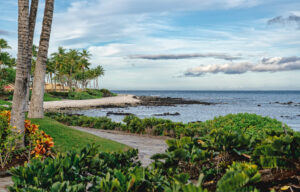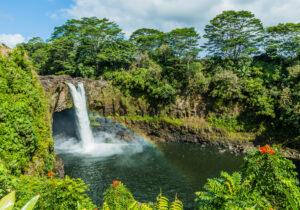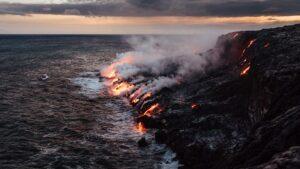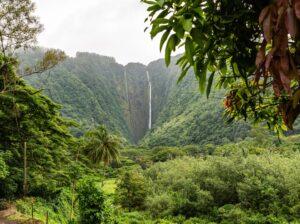
Here’s a good article on Punalu’u Beach by Discover Hawaiʻi. This is a favorite stop on the Big Island Circle Tour.
Guests to the Hawaiʻian islands dream of marvelous beach fronts with clear waves that rip past the sands of the shore. Pictures and advertisements may depict the tan sand that flows into Hawaiʻi’s clear waters, but little do many guests know, Hawaiʻi is home to famed beaches that aren’t the norm. Meet Punalu’u, the famed black sand beach in Hawaiʻi. Punalu’u is the most famous black sand beach on the Hawaiʻian islands, but not the only one. It’s grown in popularity and notoriety due to it’s beauty, but also for being a premiere destination where guests can spot endangered Hawksbill turtles and green turtles that are on the shore. Besides the black sands and wildlife, what else is a black sand beach like? Can you engage in the beach activities available on the other parts of the island? Are any other beach details different? Guests will be excited to know that while the beach may have a different color sand and some unique features, a black sand beach is just as accessible and welcoming as any other. Let’s take a look at what Punalu’u has to offer:
A Beach is a Beach
Despite the change in color, Punalu’u and all other black sand beaches are just like any other beach. Visitors can engage in swimming, snorkeling, coastal hikes, camping (a permit will be necessary in most places), and picnics. Not to mention surfing, bodyboarding, and all of the other beach activities one can think of. Everything is still fair game. Punalu’u has black sand because it is made up of pitch-black fragments of lava and basalt that was created from lava that flowed toward the ocean and exploded as it reached the ocean to cool. Since the sand is colored black, the area can get rather hot during the day time. If you a setting up camp at Punalu’u, it’s best to place your gear underneath one of the shaded palm trees to avoid the hot sand. The entire beach is lined with coconut palm trees, so it should not be too difficult to find a location.
Safety is Still a Priority
As with many of the other beaches on the Hawaiʻian islands, it’s encouraged to be careful when going in the water, because there may be strong currents. No matter what beach you are visiting, you should never enter the water if there is a high surf. These scenarios are dangerous and will exacerbate the risk of drowning or putting yourself in danger. This rule applies to all beaches that you visit, not just Punalu’u. It’s very common for tourists to drown in waters simply for lack of understanding of the waves and ocean. We recommend always following the advice and suggestions of the locals, and the rules that have been set for the particular beach you are visiting.
Don’t Let the Water Confuse You
Swimming can cause some trouble due to the rocks in the area, but it is allowed and doable. Guests are encouraged to be safe and consider the dangers, but as we’ve mentioned previously, any unique rules and regulations will be noted at the beach. Simply follow the instructions or signs you see when you arrive. Guests may be confused when they see some discoloration in the water at Punalu’u, because the water can often appear though it is the color of gasoline. This simply occurs due to the black sand of the beach. The waters at Punalu’u are also known for being rather cold.
Sights at Penalu’u and Endangered Species
Aside from green sea turtles and other endangered turtles, guests of Punalu’u will see a number of other endangered species. It’s common to spot native birds near the shore and cliffs as they fly above the sea toward their nesting colonies. Guests will also spot the endangered Hawaiʻian hawk that claims the trees above Punalu’u as its nest. Offshore at Punalu’u, guests frequently spot Spinner Dolphins and humpback whales. Sightings of Hawaiʻian monk seals have even be reported. So many sightings of endangered and rare wildlife means that Punalu’u has a healthy environment with the right resources to support large marine animals.
The Wetlands
A series of wetlands fed by basal springs is located at Punalu’u and Ninole Cove. This wetland is the second largest spring complex on the entire Hawaiʻian islands. The springs and pools at the wetlands are home to many juvenile and recruits of marine invertebrates and fish. Many believe that these wetlands are nursery area for these animals off of Hawaiʻi’s southern coast.
Koa
Punalu’u Beach has gained a lot of notoriety for its koa, a Hawaiʻian word that means “fish houses.” Here at these koa, many species of fish live in specific areas offshore. Offshore of Punalu’u Beach has become a perfect destination for these species of fish due to the spring fed waters that mix with the salt water ocean. Many of these Koa are still used by local fisherman today. Fish found in these locations include yellowfin tuna (ahi), and mackerel (ono or wahoo.)
Punalu’u in Popular Culture
The song “Black Sand Beach” by japanese guitarist and actor Yuzo Kayama was recorded in the 1960’s in honor of the beach. This is a surf rock song that many have to come to recognize solely for its reference to Punalu’u Beach. The song continues to be played by Yuzo Kayama and the Launchers, Takeshi Terauchi and Blue Jeans, The Ventures, and The Aquatides.
A Sight to See
It isn’t everyday that visitors to the Hawaiʻian islands have the opportunity to see a black sand beach. Not only is the beach unique, but the various plants, wildlife, and endangered species that inhabit Punalu’u are worth the visit alone. Since Punalu’u retains the activities that make the beach worth visiting, like snorkeling, swimming, and relaxing on the sand, guests will get the best of both world’s. Punalu’u Beach is a top the list of recommendations for anyone traveling to the Hawaiʻian islands.




